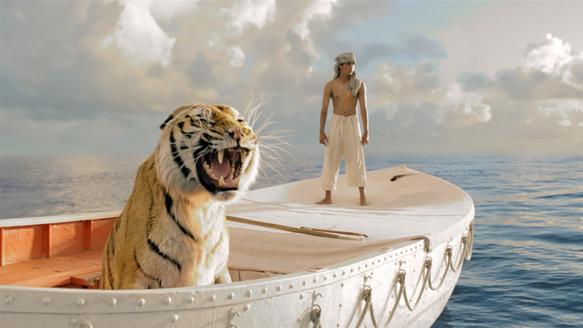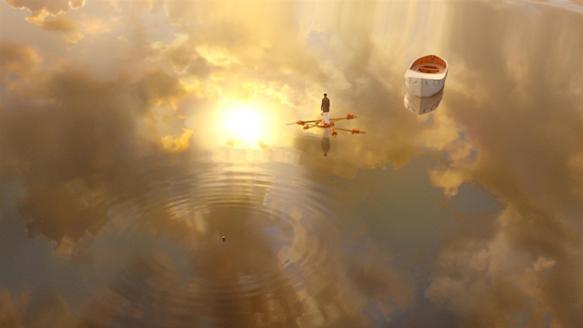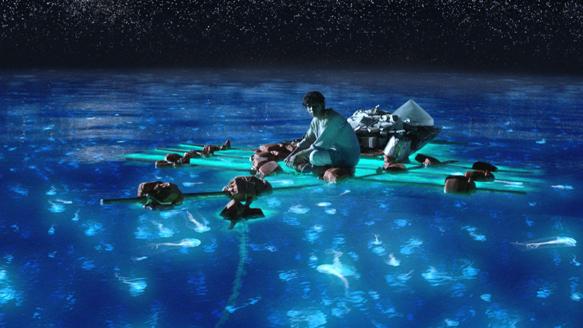
Life of Pi is a thrilling adventure, as much an aesthetic adventure as an epic action-drama. Directed by Ang Lee, the film is based on Yann Martel’s eponymous novel.
The story of young Pi (Suraj Sharma), and his survival at sea with a Bengal tiger is framed, in the film as in the novel, by the story of a writer in search of a good story. As such, without delving into details that would spoil at least some of the fun, in some sense, the film is involved with the question of storytelling and the relationship of content to form, always an interesting question when a novel is adapted to film. In the case of Life of Pi, it is all the more interesting in terms of the choice to make the film in 3D.
Ang Lee is a director who has embarked on a new direction in almost every film, the diversity of styles and subject matter is impressive and his successes span: The Wedding Banquet (1993); Sense and Sensibility (1995); The Ice Storm (1997); Crouching Tiger, Hidden Dragon (2000); Hulk (2003); and Brokeback Mountain (2005). Taking Woodstock (2009) fell quite short of expectations, yet he has more than reclaimed his reputation with Life of Pi, which has already garnered several awards and prestigious nominations at the Golden Globes and Annie Awards.

The art design in the film is used to create an experience of the imagination, rather than a more precise and life-like depiction of “reality.” Much credit goes to Rhythm & Hues Studios for the visual effects. Yes, the tiger is amazing – four tigers were filmed to create the computer generated tiger used for most scenes in the film, and yes, watching the film I did almost feel as if I was there in the boat with the tiger, but that is not the film’s greatest strength. The fascination of the film is in creating a world of images of boundless imagination and breathtaking beauty. A golden sky and clouds reflected on a sea calm as glass; jellyfish glowing in the depths at night; a luminescent whale leaping out over the boat – one might almost see the film for these moments alone. Ultimately, if one reflects on the narrative and its themes, through his artistic approach to 3D and CGI, Ang Lee has crafted a form that expresses the essence of the story.

It is never easy to strike the right balance between the frame story and the story-within-a-story; the narrating, older and wiser Pi pales before his younger, more emotionally vulnerable and desperate self. Suraj Sharma is captivating as the teenage Pi, one easily empathizes and follows his trials and triumphs as if they were one’s own. Gérard Depardieu plays a small but pivotal role with gusto, and contributes to the human palette of the tale. On a somewhat local note, in keeping with the issue of religion explored therein, Judaism is not entirely neglected as the film includes an oblique reference to “certain aspects of the cosmogony theory of Isaac Luria, the great sixteenth-century Kabbalist from Safed.” (Life of Pi, p. 3).
Life of Pi is currently showing in Israeli theatres.
Life of Pi (USA, 127 min, English) Director: Ang Lee; Screenplay: David Magee, based on Life of Pi by Yann Martel; Cinematography: Claudio Miranda; Film Editing: Tim Squyres; Original Music: Mychael Danna.






Comments are closed.